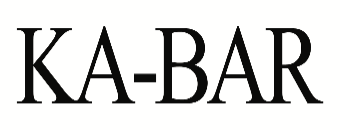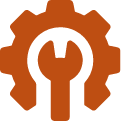Menu
Anatomy & Features
Guides
Ken Onion
In the rugged, pastoral landscapes of rural Palestine, West Virginia, a young boy named Ken Onion grew up on a cattle farm where tools weren't just accessories; they were essentials for daily life. Among these, the knife stood paramount, a tool as ancient as civilization itself. Ken's journey from a farm boy fascinated with blades to a globally recognized knife-making innovator reads like a script for an inspirational film, encapsulating the essence of American ingenuity and the relentless pursuit of perfection.
Ken's enthrallment with knives sparked at the age of four. His early escapades involved stealing his father's razor blades to whittle away at the world outside, a harmless endeavor that led to his mother frequently suffering cuts while doing laundry. Recognizing his son's burgeoning interest, Ken's father gifted him a classic Barlow knife, albeit with a dulled blade, a gesture that perhaps unknowingly set the stage for Ken's future in knife-making.
As he navigated through his childhood, Ken's affinity for knives only deepened. The barn auctions he attended, bidding on collections of old pocket knives, were not just a hobby but a prelude to his lifelong commitment to the craft. This interest burgeoned into a passion when, in the eighth grade, Ken observed a neighbor crafting knives from old two-man crosscut saws, opening his eyes to the possibilities of knife-making.
Post high school, Ken's path took a turn towards service; he joined the United States Marine Corps, a decision that introduced discipline and a broader perspective on life. His military service took him to Kaneohe, Hawaii, where his personal and professional life would undergo significant transformation. It was here, amidst the island's beauty, that Ken met Noel, a hula dancer who would become his wife.
While Hawaii would become the backdrop of his personal love story, it also played a critical role in rekindling his passion for knives. It was here, browsing through a magazine aisle in a Longs drug store, that Ken stumbled upon a "Knives Illustrated” magazine, a discovery that reintroduced him to his first love. This encounter not only reinvigorated his passion but also connected him with Stan Fujisaka, a master custom knife maker who would become Ken's mentor, teaching him the finesse and precision of knife-making.
Ken and Noel Onion with master knifemaker Stan Fujisaka
Fujisaka’s approach to teaching was rooted in the belief that a deep understanding of the fundamentals was essential to achieving mastery. He introduced Ken to the complex processes of grinding blades, heat treating, and assembly, each step requiring a level of precision and patience that would become hallmarks of Ken’s later work. Fujisaka emphasized the importance of understanding the materials, the behavior of metal under different conditions, and the intricacies of blade geometry, all of which are crucial for crafting knives that are not only beautiful but also supremely functional.
Under Fujisaka's guidance, Ken learned more than just the technical skills of knife-making; he absorbed the philosophy that the creation of a knife is an intimate process, blending art and engineering. This period was transformative for Ken, shaping his approach to knife design and innovation. Fujisaka encouraged experimentation and innovation, urging Ken to think beyond conventional designs and techniques.
Ken's determination to surpass his mentor’s craftsmanship in smoothness and ease of use led him to develop the revolutionary SpeedSafe assisted opening mechanism.
The genesis of SpeedSafe was inspired by a simple yet profound insight: the application of a cam lever mechanism to a knife's pivot point. This revolutionary idea came to Ken as he was milling a cam for a friend's motorcycle. He envisioned a mechanism where the user could initiate the blade's movement manually, and then a torsion bar would take over to complete the opening action smoothly and safely. This would enable the knife to be opened with one hand, without the need for gravity or wrist flicks, thereby circumventing the legal issues surrounding automatic knives.
Ken's design was meticulous and considerate. He delved into the legalities surrounding knife mechanisms, ensuring that his invention would not breach any existing laws. This thoroughness was critical in distinguishing SpeedSafe from automatic knives, which are spring-loaded and activated by a button or switch. SpeedSafe, in contrast, requires a physical force applied directly to the blade or a thumb stud, making it a manual system in the eyes of the law.
- Ken's determination to produce a smooth and easy to use knife led to the creation of the SpeedSafe mechanism
- Ken's design was meticulous, ensuring that that his invention would not break any existing laws
- SpeedSafe set itself apart by requiring a physical force be applied directly to the blade or thumb stud
After perfecting his design, Ken faced the challenge of finding a manufacturer willing to take a chance on his innovative mechanism. Many were hesitant, fearing legal complications or market resistance. The breakthrough came when Doug Flagg of Kershaw, flew down to Hawaii to meet with him, after hearing about Ken's design at the 1996 Shot Show. Impressed by Ken's innovation and vision, Flagg invited Ken to collaborate with Kershaw, marking the beginning of a fruitful partnership.
The SpeedSafe mechanism was first introduced to the market in 1998 with the launch of the Kershaw Random Task knife. The knife was an instant success, acclaimed for its safety, reliability, and ease of use. It allowed users to confidently open their knives with one hand, without the risk of the blade accidentally deploying in their pocket. The Random Task later won the prestigious Blade Magazine American Made Knife of the Year Award, further cementing Ken Onion's reputation as a leading innovator in the knife industry.
Ken Onion's innovations didn’t stop with Kershaw, after partnering with CRKT in 2008, Ken has continued to push the boundaries of knife-making. A standout example of his ongoing ingenuity is the development of the Field Strip technology, exemplified in the 2016 CRKT Homefront. This revolutionary feature enables users to disassemble their knife without tools for effortless cleaning and maintenance, directly addressing a key challenge for knife enthusiasts.
Building on the success of the Field Strip technology, Ken Onion, and CRKT introduced an enhanced iteration with the 2021 CRKT Bona Fide. This knife not only incorporates the acclaimed Field Strip technology but also showcases Ken's commitment to marrying form with function.
- After hearing about Ken's SpeedSafe design at 1996 Shot Show, Doug Flagg of Kershaw flew down to Hawaii to meet Ken
- Impressed by Ken's design, Doug invited Ken to partner with Kershaw
- SpeedSafe was first introduced in the Kershaw Random Task in 1998, later winning the American Made Knife of the Year
- Ken would later partner with CRKT in 2008, developing the revolutionary Field Strip mechanism
After meeting Kyle Crawford of Work Sharp at the Blade Show in 2012, Ken saw an opportunity to bring his expertise and inventive spirit to the world of knife sharpening, a critical aspect of knife ownership often overlooked by many. Together, they embarked on a journey to create a knife sharpener that would embody the principles of efficiency, effectiveness, and ease of use.
The result of this collaboration was the Ken Onion Edition Knife & Tool Sharpener, launched in 2013. This sharpener was a departure from the conventional, offering a design that was not just about sharpening knives but also with an understanding of the needs of knife enthusiasts and professionals. It featured adjustable angles, variable speeds, and replaceable abrasive belts, accommodating a wide range of sharpening needs from delicate blades to rugged tools. The device was designed to be user-friendly, allowing for quick and easy adjustments to match the specific requirements of the knife being sharpened.
Ken's involvement in the project was hands-on, leveraging his extensive experience in knife design and usage to inform the development process. He worked closely with the team at Work Sharp, not just in his workshop but also at their headquarters in Ashland, Oregon, to ensure that the sharpener met his high standards of performance and reliability.
The Ken Onion Edition Knife & Tool Sharpener was a significant success, celebrated for its versatility and the quality of its sharpening. It allowed users to maintain the sharpness of their blades with precision and ease, thereby extending the life and functionality of their tools. This product solidified Ken Onion's commitment to supporting the knife community by addressing one of the most crucial aspects of knife ownership: maintenance.
-After meeting with Kyle Crawford of Worksharp, Ken Onion would go on to help develop the Work Sharp Ken Onion Edition Knife & Tool Sharpener
Ken Onion's journey is a testament to the power of passion, innovation, and perseverance. From a young boy running with stolen razor blades to a respected figure in the knife-making community, Ken has carved a legacy that transcends his creations. His story is not just about knives but about the relentless pursuit of excellence and his undeniable spirit of innovation. Ken Onion's name, much like the blades he crafts, is etched in the halls of knife-making history, a beacon for aspiring artisans and a benchmark for quality and ingenuity in the industry.
Written by Drew Clifton
Expert Reviewed
T.C. Barnette
T.C. Barnette is a dynamic media personality and the esteemed spokesperson for SMKW (Smoky Mountain Knife Works), where his passion for knives intersects with his captivating on-screen presence. With a magnetic charisma and deep expertise in cutlery, T.C. has become a beloved figure in the knife community.






































